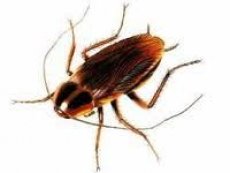New publications
Cockroaches and locusts could become raw materials for antibiotic production
Last reviewed: 30.06.2025

All iLive content is medically reviewed or fact checked to ensure as much factual accuracy as possible.
We have strict sourcing guidelines and only link to reputable media sites, academic research institutions and, whenever possible, medically peer reviewed studies. Note that the numbers in parentheses ([1], [2], etc.) are clickable links to these studies.
If you feel that any of our content is inaccurate, out-of-date, or otherwise questionable, please select it and press Ctrl + Enter.

The problem of resistance of pathogenic bacteria to drugs is becoming increasingly acute.
Scientists are constantly discovering microorganisms that even the strongest antibiotics cannot "take". Such microbes are called "superbugs" in medical language. For example, if at the beginning of the last century, when the use of antibiotics for medical purposes was just gaining momentum, penicillin was successfully used to combat streptococci, now it is powerless against them.
Streptococci now contain an enzyme that breaks down penicillin. Moreover, there are even types of streptococci for which penicillin is vital.
Recently, a group of scientists from the Johns Hopkins University School of Public Health (Baltimore, USA) made a similar discovery regarding tuberculosis.
The drug rifampicin, used to treat this disease, turns out to be a “drug” for the tuberculosis bacillus.
Scientists were surprised to discover that bacteria, defending themselves from the action of antibiotics, behave like social creatures. James Collins and his colleagues from the Howard Hughes Medical Institute (Boston, USA) reported in the journal Nature about their experiment with intestinal bacteria.
They exposed a colony of these bacteria to an antibiotic, gradually increasing its dose. Not all bacteria developed resistance to it, but the entire colony was invulnerable to the drug.
The World Health Organization recently declared that humanity is on the threshold of a “post-antibiotic era,” when even the most common infections can again become deadly.
Already now, according to WHO, in the EU countries alone, 25 thousand people die every year from infection with antibiotic-resistant bacteria.
The European Centre for Disease Prevention and Control provides similar data: every year, 400,000 people become infected with resistant microbes, and most of them catch them in hospitals.
“We have reached a critical point, with resistance to existing antibiotics on an unprecedented scale and new antibacterial drugs not being developed as quickly as they should be,” said WHO Regional Director for Europe Susanna Jakab.
Although the emergence of resistance is a natural process, many circumstances, as reported by WHO, contribute to the fact that this process has accelerated dramatically today. One of them is the availability and uncontrolled use of antibiotics. These drugs are sold without a prescription in 14 of 21 Eastern European countries.
These products are purchased not only for the treatment of people, but also for domestic animals and livestock. In some regions of the world, according to WHO, almost half of all antibiotics produced are “fed” to animals for prophylactic purposes.
Another problem is the dishonesty of doctors, many of whom prescribe antibiotics to patients for viral infections (for example, flu), when such drugs cannot help in principle. In addition, patients often stop taking antibiotics prematurely, which contributes to the development of resistant bacteria.
One of the tasks that WHO sets in connection with the current situation is the development of new antibiotics. The task is extremely difficult, but researchers involved in its solution sometimes manage to achieve unexpected results. A group of scientists from the University of Nottingham (UK) headed by Simon Lee found that promising raw materials for the production of antibiotics could be... cockroaches and locusts.
By studying the supraesophageal ganglion (a nerve node that functions as the brain) in these insects, scientists identified nine substances that are poisonous to certain microorganisms.
Laboratory experiments have shown the high effectiveness of these substances in the fight against Staphylococcus aureus (this bacterium can cause everything from common acne to such dangerous diseases as pneumonia, meningitis, endocarditis, etc.) and E. coli.
These substances were found to be harmless to human cells. Scientists were not particularly surprised by the discovery that cockroaches and locusts are capable of producing antibiotic substances in their bodies.
"These insects live in extremely unhygienic and unhealthy conditions, in which they have to deal with pathogens of many diseases. Therefore, it is logical that they have developed their own strategies of defense against microorganisms," explained Simon Lee.

 [
[